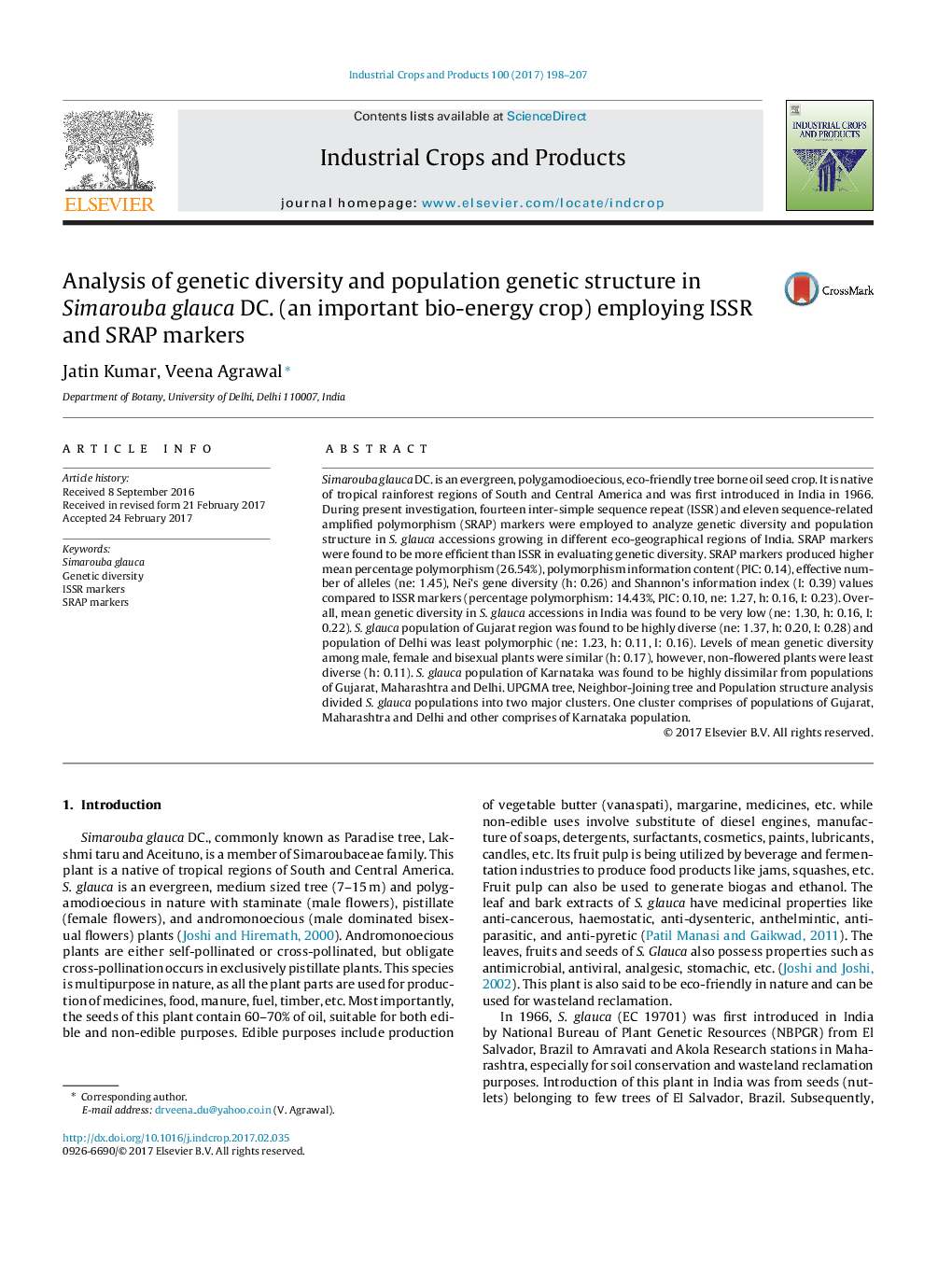| Article ID | Journal | Published Year | Pages | File Type |
|---|---|---|---|---|
| 5762181 | Industrial Crops and Products | 2017 | 10 Pages |
Abstract
Simarouba glauca DC. is an evergreen, polygamodioecious, eco-friendly tree borne oil seed crop. It is native of tropical rainforest regions of South and Central America and was first introduced in India in 1966. During present investigation, fourteen inter-simple sequence repeat (ISSR) and eleven sequence-related amplified polymorphism (SRAP) markers were employed to analyze genetic diversity and population structure in S. glauca accessions growing in different eco-geographical regions of India. SRAP markers were found to be more efficient than ISSR in evaluating genetic diversity. SRAP markers produced higher mean percentage polymorphism (26.54%), polymorphism information content (PIC: 0.14), effective number of alleles (ne: 1.45), Nei's gene diversity (h: 0.26) and Shannon's information index (I: 0.39) values compared to ISSR markers (percentage polymorphism: 14.43%, PIC: 0.10, ne: 1.27, h: 0.16, I: 0.23). Overall, mean genetic diversity in S. glauca accessions in India was found to be very low (ne: 1.30, h: 0.16, I: 0.22). S. glauca population of Gujarat region was found to be highly diverse (ne: 1.37, h: 0.20, I: 0.28) and population of Delhi was least polymorphic (ne: 1.23, h: 0.11, I: 0.16). Levels of mean genetic diversity among male, female and bisexual plants were similar (h: 0.17), however, non-flowered plants were least diverse (h: 0.11). S. glauca population of Karnataka was found to be highly dissimilar from populations of Gujarat, Maharashtra and Delhi. UPGMA tree, Neighbor-Joining tree and Population structure analysis divided S. glauca populations into two major clusters. One cluster comprises of populations of Gujarat, Maharashtra and Delhi and other comprises of Karnataka population.
Related Topics
Life Sciences
Agricultural and Biological Sciences
Agronomy and Crop Science
Authors
Jatin Kumar, Veena Agrawal,
